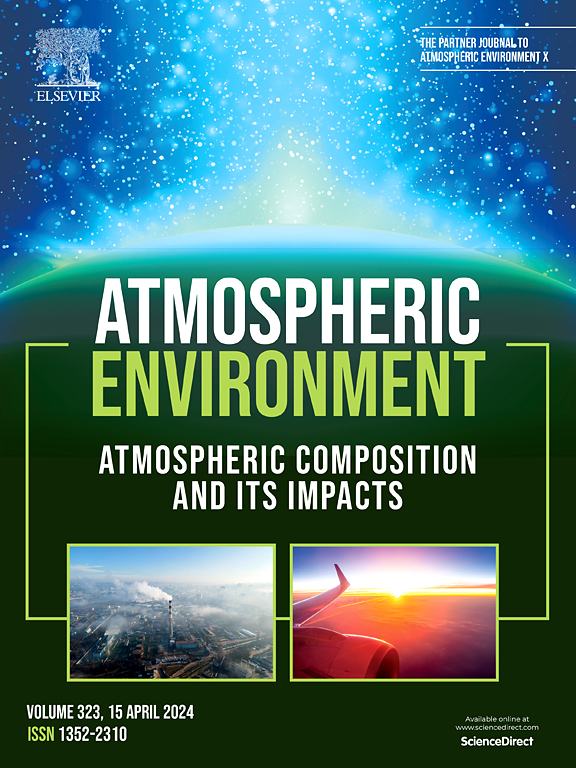East Asian dust storm in March 2021: Perspective views from ground observation, satellite measurement and numerical simulation
IF 4.2
2区 环境科学与生态学
Q2 ENVIRONMENTAL SCIENCES
引用次数: 0
Abstract
During March 13–18, 2021, East Asia experienced the strongest dust storm in the last decade. This windblown dust event caused large-scale dispersion of aerosol pollution, and attracted widespread attention due to its severe impacts on land-atmosphere-marine ecosystems. Here we investigated the dust sources, transport, and deposition of this dust storm and its effects on the Asia-Pacific region by using ground observations, satellite remote sensing products, and numerical simulation. The results showed that the potential aeolian dust source was mainly located in the Gobi Desert in southern Mongolia and central Inner Mongolia. This dust storm generated rapid increases in ambient particle concentrations over northern and eastern China, the Korean peninsula, and southwestern Japan. Air quality in 82% of the studied East Asian cities deteriorated noticeably as a result of mineral dust intensification. The ground-based Mie-scattering lidar detected the long-distance dispersion of dust aerosols in the 3–5 km high altitudes over Seoul, Osaka, Tokyo, and Niigata. Approximately 16.1 Tg of floating dust was deposited in the Northwest Pacific Ocean. The intensity of dust deposition in the East China Sea was almost twice that in the Yellow Sea and the Sea of Japan. Satellite data revealed that dust particles transported remotely from the East Asian desert were deposited in the North Pacific, resulting in an evident increase (55%–86%) in regional chlorophyll-a concentrations within a week after this dust storm event. Marine algal blooms developed quickly in response to the joint effects of atmospheric dry or wet deposition and surface-ocean currents. This study quantitatively assessed the potential influences of this strong East Asian dust storm on the atmospheric and marine environment, providing a multi-angle perspective for investigating the dynamic long-range transport of aerosols and its implications for global dust cycles.

2021年3月东亚沙尘暴:地面观测、卫星测量和数值模拟的视角
2021年3月13日至18日,东亚地区经历了近十年来最强的沙尘暴。此次风沙事件引起了气溶胶污染的大规模扩散,并因其对陆地-大气-海洋生态系统的严重影响而引起广泛关注。本文通过地面观测、卫星遥感和数值模拟等手段研究了此次沙尘暴的沙源、输运、沉积及其对亚太地区的影响。结果表明,潜在风尘源主要位于蒙古南部和内蒙古中部的戈壁沙漠。这场沙尘暴导致中国北部和东部、朝鲜半岛和日本西南部的环境颗粒浓度迅速增加。在被研究的东亚城市中,82%的城市的空气质量因矿物粉尘加剧而明显恶化。地面的米散射激光雷达在首尔、大阪、东京和新泻上空3-5公里的高空探测到了沙尘气溶胶的远距离扩散。大约16.1 Tg的浮尘沉积在西北太平洋。东海的降尘强度几乎是黄海和日本海的两倍。卫星数据显示,东亚沙漠远程输送的沙尘颗粒沉积在北太平洋,导致该地区在沙尘暴发生后一周内叶绿素-a浓度明显增加(55% ~ 86%)。在大气干或湿沉积和海洋表层洋流的共同作用下,藻华迅速发展。本研究定量评估了东亚强沙尘暴对大气和海洋环境的潜在影响,为研究气溶胶的动态远程传输及其对全球沙尘循环的影响提供了多角度的视角。
本文章由计算机程序翻译,如有差异,请以英文原文为准。
求助全文
约1分钟内获得全文
求助全文
来源期刊

Atmospheric Environment
环境科学-环境科学
CiteScore
9.40
自引率
8.00%
发文量
458
审稿时长
53 days
期刊介绍:
Atmospheric Environment has an open access mirror journal Atmospheric Environment: X, sharing the same aims and scope, editorial team, submission system and rigorous peer review.
Atmospheric Environment is the international journal for scientists in different disciplines related to atmospheric composition and its impacts. The journal publishes scientific articles with atmospheric relevance of emissions and depositions of gaseous and particulate compounds, chemical processes and physical effects in the atmosphere, as well as impacts of the changing atmospheric composition on human health, air quality, climate change, and ecosystems.
 求助内容:
求助内容: 应助结果提醒方式:
应助结果提醒方式:


